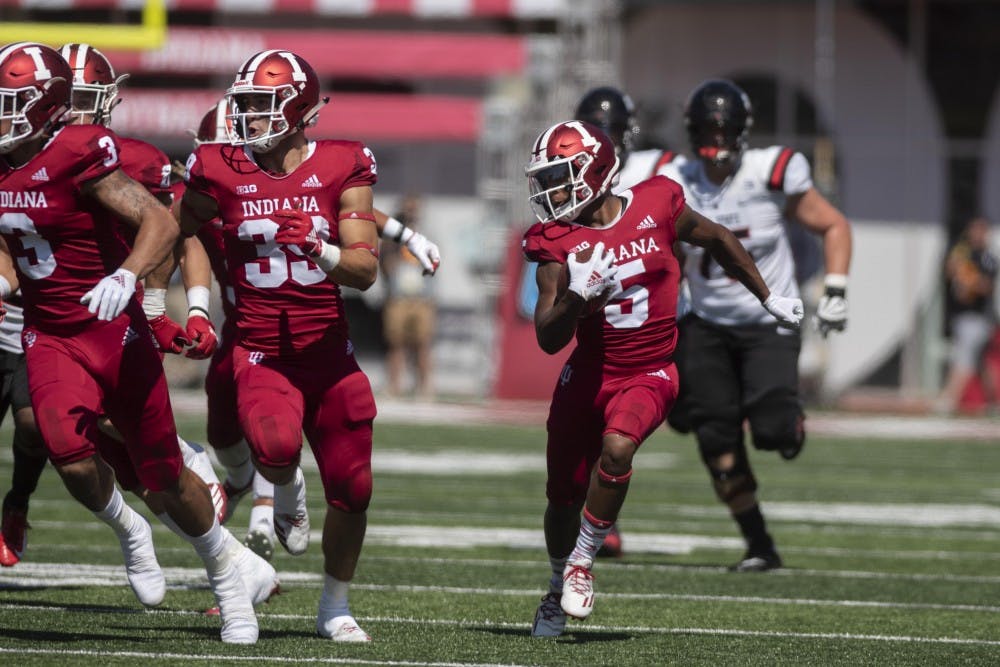This is when things fall apart for IU.
Consistently, seemingly every season, just like clockwork.
It’s not as much a specific date on the calendar as it is a specific moment on IU’s schedule, when the shift from nonconference to conference play occurs.
The Hoosiers have failed to put together anything resembling a decent performance in Big Ten play since a 4-4 conference mark in 2001. Even during the recent seasons in which IU has made a bowl game, the Hoosiers have gone 2-6 and 4-5 against conference opponents.
And during the seasons IU hasn’t made a postseason appearance, there are a litany of one and two-win showings against Big Ten foes.
But, there is reason to expect something different in 2018, and it has less to do with the Hoosiers than you may think.
Nonconference play exposed the Big Ten’s teams earlier this season. Embarrassing home losses occurred to teams from both divisions — Nebraska losing to Troy, Purdue stumbling against Eastern Michigan, Northwestern blowing an 18-point lead against Akron, Rutgers allowing 55 points to Kansas and Maryland being blown out at home by Temple.
Most of the Big Ten’s top teams like Iowa, Ohio State and Penn State remain intimidating to opponents. As for the rest of the conference, it’s just not very good.
This should be a dream for the IU football program and its fans.
Many of those one and two-win conference campaigns were a result of the Hoosiers having a flat-out noncompetitive team. But the three and four-win conference seasons, like those in 2013 and 2016, were the result of a decent IU team playing against elite conference opponents on an almost weekly basis.
That won’t happen in 2018.
Aside from games at Ohio State and at home against Penn State, the Hoosiers will have a realistic chance against all other conference opponents this season.
IU’s offense silenced critics with its 3-0 nonconference showing. Sophomore quarterback Peyton Ramsey has been efficient in the passing game without taking unnecessary risks, in part because of the emergence of freshman Stevie Scott as IU’s featured running back.
Familiar faces at wide receiver like juniors Donavan Hale and Nick Westbrook have offered the Hoosiers with the occasional downfield deep threat as well. Most importantly, IU’s offensive line has remained healthy leading into conference play.
A unit ravaged by injuries last season has shown some progress after being challenged by IU Coach Tom Allen following the opening game of the season.
Defensively, a young Hoosier defense has risen to the limited challenges posed to it this season. While Florida International, Virginia and Ball State weren’t offensive juggernauts, the Hoosiers showed competency stopping strong rushing attacks, a dual-threat quarterback and a pass-happy offense after showing vulnerabilities against FIU.
Even in the loss to Michigan State, IU was able to neutralize the Spartans' ground game.
When it comes to special teams, the Hoosiers, and in particular redshirt senior wide receiver J-Shun Harris, are peaking at the right time. On the eve of the start of Big Ten play, Harris marked his return from a third torn ACL by returning a punt against Ball State 86 yards for a touchdown.
Harris now has a punt return touchdown in three of his last 11 games, and he will play a key part in any upset wins IU has in conference play.
There are certainly Big Ten games IU needs to win to reach the postseason. Defeating Rutgers on the road and Maryland and Purdue at home seems to be the easiest path to six wins for the Hoosiers. But the bare minimum shouldn’t be what IU aims for.
With a team that’s limited its mistakes during nonconference play and has a favorable conference schedule during a down year for the Big Ten, the Hoosiers have the potential to reach seven or eight wins this season.
The question, though, as so often is the case with IU football, is can the Hoosiers elevate their level of play as summer turns to fall?
Because more often times than not, they can't.
cpdrummo@iu.edu
@cdrummond97




